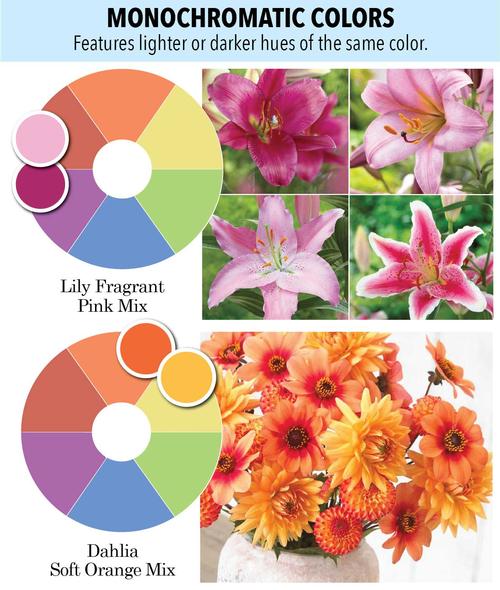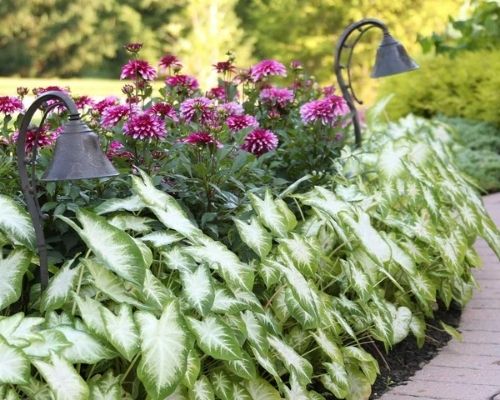Learning to Use Color in Your Garden
There are few rules in gardening, and that's especially true when it comes to color – anything goes! In the garden, there are as many different ways to use color as there are gardeners. Flower and foliage colors can be chosen to complement the exterior of your home, to make a creative statement or to create a mood that’s exciting, soothing or somewhere in between.
Knowing a little about how your eyes see color makes it easier to select combinations that will be pleasing to the eye. A color wheel is a great tool for understanding the relationships between different colors.
On a color wheel, colors appear in the same order as they do when a prism splits sunlight into a rainbow. Here are several ways you can use a color wheel to suggest appealing color combinations. Experimenting with color harmonies as suggested below – analogous, complementary, monochromatic and split complementary – is a great way to discover new color combinations that will be pleasing to your creative eye.
Analogous Colors
Colors that are located adjacent to each other on the color wheel are called analogous colors. An analogous color combination might include three colors, such red, orange and yellow, or just two colors, such as violet and purple. Analogous colors always work well together and create a pleasing visual harmony.

Complementary Colors
Complementary colors are positioned directly opposite from each other on the color wheel. When two complementary colors are combined, they create visual tension because they are so completely different from each other.
Examples of complementary color pairs include yellow and purple, orange and blue, and red and green. Using complementary colors in the garden conveys boldness, energy and excitement.

Monochromatic Colors
A monochromatic color scheme features lighter or darker hues of the same color. Examples would be red, rose and pink, or navy, cobalt and sky blue. Using monochromatic colors in the garden is soothing to the eye and creates a sense of calm.

Split Complementary Colors
This color scheme combines the energy of complementary colors, with the harmony of analogous colors. An example would be orange and yellow with purple.
To learn more about how to use color in your flower garden, read:
6 Tips for a More Colorful Flower Garden
How to Use Black Flowers and Dark Foliage
How to Use Burgundy in Your Flower Garden
How to Use Orange in Your Flower Garden
How to Use Pink in Your Flower Garden
How to Use Red in Your Flower Garden
How to Use White in Your Flower Garden
How to Use Purple in Your Flower Garden


